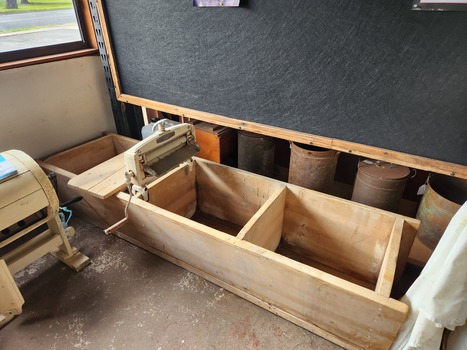Historical information
These types of wash troughs were commonly used in Australian households before the advent of electric washing machines, particularly in the late 19th to mid-20th century. Clothes would be soaked, scrubbed, and rinsed in the separate compartments, with excess water removed using the wringer. This example is indicative of early domestic laundry practices in rural communities, such as Natimuk, and would have likely been found in a backyard washhouse or laundry shed.
Physical description
This is a vintage triple-compartment wooden wash trough designed for manual laundry washing. The structure features three rectangular tubs joined side-by-side within a long wooden frame. A metal hand-cranked wringer (or mangle) is mounted over the central tub, supported by a sturdy wooden board extending across the top. The wringer consists of twin rubber rollers within a white-painted metal housing, showing signs of wear and age. The entire trough sits flat on the floor and is constructed with basic carpentry techniques, including butt joints and visible nails.




